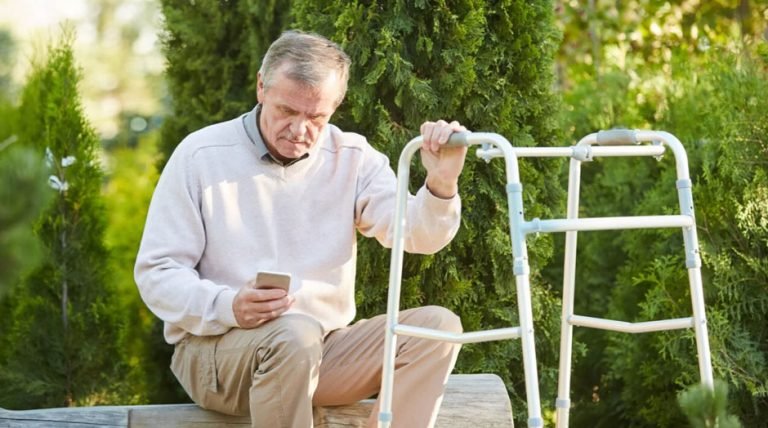Introduction
Knee replacement surgery, also known as knee arthroplasty, is a common procedure aimed at restoring knee function and alleviating pain caused by knee joint deterioration. After undergoing this surgery, it is crucial to follow the appropriate exercise regimen to facilitate a successful recovery. However, there are certain exercises and movements that should be avoided to prevent potential complications and ensure optimal healing. In this article, we will explore the top five mistakes to avoid after knee replacement surgery, providing valuable insights for a safe and effective rehabilitation process.
Mistake 1: Engaging in Activities with a High Risk of Falling
Following a knee replacement, individuals often experience a temporary loss of strength, range of motion, and balance, which increases the risk of falls. A fall can disrupt the healing process and potentially damage the prosthetic joint. To reduce this risk, it is essential to modify your lifestyle and implement safety measures such as:
- Using handrails when navigating stairs
- Utilizing a rubber mat or shower chair during bathing
- Sitting down while dressing to maintain stability
- Keeping the floor clear of tripping hazards like toys or slippery rugs
- Avoiding slippery terrains such as mud, ice, or wet grass
By adopting these precautions, you can minimize the chances of falling and safeguard your recovery progress.
Mistake 2: Prolonged Sitting
Extended periods of sitting can lead to the formation of blood clots, especially within the first two weeks after knee replacement surgery. Additionally, prolonged sitting can impede fluid drainage in the lower leg, exacerbating swelling. To mitigate these risks, it is advisable to avoid sitting for more than 45 to 60 minutes at a time during the initial 7 to 10 days after surgery. If extended sitting is necessary, elevating the leg on a chair or similar support can help reduce swelling and enhance circulation.
Mistake 3: Excessive Weight-Bearing Too Soon
After knee replacement surgery, individuals often require assistive devices such as walkers or crutches to aid mobility. While it is important to gradually increase weight-bearing activities, it is crucial to avoid excessive weight-bearing in the early stages of recovery. Engaging in strenuous weight-bearing activities before receiving clearance from your surgeon or physical therapist can hinder healing and jeopardize the longevity of the prosthetic joint. Additionally, stair climbing should be approached cautiously, leading with the non-operated leg when ascending and the operated leg when descending.
Mistake 4: Running and Jumping
Running and jumping activities exert significant force on the knee joint, which can be detrimental during the recovery phase after knee replacement surgery. The impact forces generated during running are approximately three times higher than those experienced while walking. Engaging in high-impact activities, including running and jumping, can impede the healing process and potentially damage the prosthesis. It is crucial to heed the advice of your surgeon and refrain from participating in these activities, even after complete recovery.
Mistake 5: Sports with High Impact or Rapid Direction Changes
Participating in contact sports or sports that involve sudden twisting or jerking movements can pose risks to a knee replacement. Activities such as soccer, football, rugby, skiing, basketball, hockey, and gymnastics should be avoided during the recovery period. Instead, low-impact sports like cycling, golf, and swimming are recommended as excellent alternatives for staying active without jeopardizing your knee replacement.
Beneficial Exercises for Knee Replacement Rehabilitation
While it is important to avoid the aforementioned mistakes, engaging in appropriate exercises plays a vital role in knee replacement rehabilitation. Working closely with your orthopedic surgeon or physical therapist, you can develop a tailored exercise program to enhance your recovery. Here are some examples of beneficial exercises at different stages of recovery:
Immediately after surgery:
- Knee straightening: Place a small rolled towel under your heel and contract the muscles above the knee to fully straighten the knee. Hold this position for 5 to 10 seconds.
- Bed-supported knee bends: While lying in bed, slide the sole of your foot along the surface towards your buttocks, bending the knee as much as possible. Hold the bent position for 5 to 10 seconds and then straighten the leg again.
During this stage, a physical therapist will assist you in learning how to use assistive devices and walk properly.
3 months after surgery:
By this time, most individuals can resume daily activities and engage in low-intensity exercises such as:
- Light weightlifting
- Swimming
- Low-impact dancing
- Golfing
6 months after surgery:
At this stage, you can gradually incorporate more intense activities into your routine, such as:
- Doubles tennis
- Heavier weightlifting
- Strenuous forms of dancing
Always consult your surgeon if you have specific questions about a particular sport or activity.
Dangers of Overdoing Exercises
It is crucial to avoid overexertion during the rehabilitation process, as it can lead to complications. Excessive force or intensity can loosen or fracture the bones surrounding the implant, increase pain and swelling, and hinder the overall recovery progress. It is important to listen to your body and pay attention to any warning signs, such as increased pain, swelling, or warmth around the knee. If you experience these symptoms, reduce the activity level and apply ice to the knee for 15 to 20 minutes. If the symptoms persist, consult your healthcare provider for further guidance.
Conclusion
While exercise plays a significant role in the recovery process after knee replacement surgery, it is crucial to avoid certain exercises and movements that can impede healing and jeopardize the success of the procedure. By following the guidelines provided in this article and working closely with your healthcare team, you can ensure a safe and effective rehabilitation journey. Remember, it is always better to err on the side of caution and prioritize your long-term well-being.


